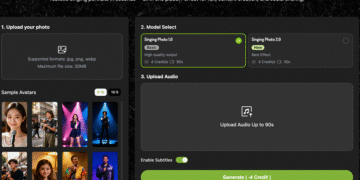When we talk about managing money, the usual suggestions come up: budgeting apps, savings accounts, and cutting back on subscriptions. These all work, but there are other, less obvious tools that can be just as useful, sometimes even more so, especially when you need a bit more structure or motivation.
Plenty of platforms and digital services include features that, although not designed for budgeting, can help keep your spending in check. And while they might not appear in traditional financial advice, they’re worth considering.
1. Using Deposit Limits to Rein In Spending
One simple but often underused way to stay on top of spending is by setting limits on how much money you can deposit into an account over a certain period. Some online services let you cap how much you put in daily, weekly, or monthly, with no way to go over that amount until the time resets. It’s a firm boundary that can stop you from spending more than you meant to.
This kind of feature is commonly found on platforms in the entertainment space. For example, certain online services offer deposit limits as part of their account settings. Once set, they lock you out from adding more funds until the limit resets, which can be surprisingly helpful if you tend to spend quickly when the mood strikes. This is quite common among top online casinos, whereby sites like these in the UK include breakdowns of what kinds of deposit controls are available.
2. Prepaid Cards That Help You Stick to a Budget
Prepaid debit cards are a great way to keep your spending in check without relying on willpower alone. Because you have to load money onto the card before using it, you’re forced to think ahead about how much you want to spend, and once it’s gone, it’s gone. This makes them perfect for setting limits on things like eating out, petrol, or weekend spending. You can also use different cards for different categories if you want to go a step further.
Some of these cards come with apps that show real-time spending, help you track trends, and send you alerts when your balance is low. It’s a straightforward approach that works well for people who like having clear boundaries and fewer temptations.
3. Apps That Track Subscriptions You Forgot You Had
It’s easy to sign up for a streaming service or app and forget about it, especially when the monthly cost is small. But those small payments add up over time, and many people end up spending more than they realise on unused subscriptions.
That’s where subscription tracking apps come in. These apps connect to your bank account and flag any regular payments they spot. Once everything’s listed, it’s usually eye-opening to see how much is going out on stuff you may not even use anymore.
Some apps even let you cancel subscriptions directly through them. Whether or not you use that feature, just seeing all your recurring payments in one place is a good way to take back control.
4. Making Saving More Fun with Gamified Apps
Saving money is usually seen as a chore, but it doesn’t have to be. Some apps have found ways to make saving feel more like a game, with features that encourage you to build up savings without overthinking it.
For example, you can set up rules that round up every purchase and save the difference. Or you can try challenges where you save a small amount each day, increasing slowly over time. These methods work well for people who struggle with traditional saving. They’re simple, often automatic, and they tap into the same part of your brain that enjoys progress and small wins.
5. No-Spend Challenges on Social Media
Sometimes, the best motivation comes from other people doing the same thing. That’s where no-spend challenges come in. These are popular on platforms like Reddit and Instagram, where people commit to a week or month of spending only on essentials, and share their experience along the way.
There’s no pressure to be perfect, and it’s often more about awareness than strict rules. People post tips, share their slip-ups, and offer encouragement. It turns cutting back into something social and supportive, rather than something you have to do alone. Doing a no-spend month with others can also help reset your habits. You start to notice where your money goes, what you actually miss (or don’t), and which purchases really bring value.
Final Thoughts
Managing money isn’t just about cutting costs; it’s about building systems that work for your lifestyle. And sometimes, the best tools aren’t the obvious ones. Whether it’s setting deposit limits to prevent overspending, using prepaid cards for better budgeting, or joining a community to stay accountable, these lesser-known approaches can make a big difference.
The trick is to try things out, see what sticks, and build a routine that feels realistic. You don’t need to follow every trend or use every app. But finding just one or two unexpected tools that work for you might be enough to help you save more, spend less, and feel more in control.
David Prior
David Prior is the editor of Today News, responsible for the overall editorial strategy. He is an NCTJ-qualified journalist with over 20 years’ experience, and is also editor of the award-winning hyperlocal news title Altrincham Today. His LinkedIn profile is here.












































































